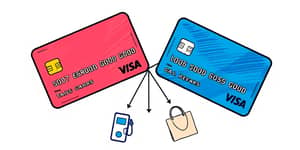
Credit card rewards have evolved into an art of strategic redemption. This guide shows you how to make every point count and transform them into experiences, value, and savings.
When it comes to redeeming rewards, you have several paths. Each option offers its own balance of convenience and value.
Some programs provide take full advantage of points by offering both cash-like and travel-centric options.
Understanding the cents-per-point value is key to maximizing your rewards.
Keep in mind that boosted rates through issuer’s travel portal can significantly increase your return.
Travel enthusiasts often find the best value by booking through portals or transferring points to partners. You can access flights, hotels, car rentals, and even vacation packages.
Portal bookings remove blackout dates on some cards and offer fixed point values. Alternatively, point transfers unlock award charts, enabling transfers to travel partners almost always at premium redemption rates.
Examples:
Converting points into gift cards is straightforward and predictable. Redemption rates hover around one cent per point, though promotional windows may offer higher value.
Advantages include broad merchant selection and no blackout dates. However, these redemptions usually yield lower returns compared to travel options.
Look for periodic offers that boost gift card values to 1.1–1.25 cents per point for even greater savings.
Redeeming points for statement credits provides flexibility to offset recent purchases or reduce your balance. Typical values range from half a cent to one cent per point.
Most issuers require a minimum redemption, often $25. Check your portal for eligible transactions and timing windows—Chase, for example, lets you offset purchases made within 90 days.
Keep in mind that statement credits cannot be applied toward your minimum payment due, so maintain your payment schedule.
Before you redeem, verify any minimum point or dollar thresholds:
• Gift cards and statement credits often start at 2,500 points ($25).
• Travel awards depend on the cost of your booking.
• Some issuers, like Chase or Citi, may allow redemptions of any size for certain rewards.
Understanding minimum redemption requirements can vary widely helps prevent frustration at checkout.
To extract maximal benefit from your rewards, follow these proven strategies:
Even savvy users can make mistakes. Watch out for low-value redemption options like certain merchandise or at-checkout offers.
Be sure you have enough points to meet minimums and verify that statement credits cover the intended charges without affecting your payment obligations.
Redeeming points is typically straightforward. Follow these steps to complete your reward redemption:
Recent innovations have made point redemption even more flexible:
• Chase Pay Yourself Back offers boosted redemption rates for select purchases.
• Preferred pricing and stopover perks in airline programs like Aeroplan.
• Limited-time transfer bonuses of 10–30% amplify your points.
Despite inflation, travel transfer values remain strong, and issuers continue to introduce promotional gift card rates. Statement credits now address both specific and general expense categories, broadening redemption choices.
Here are quick calculations to illustrate:
– 50,000 points transferred to an airline for a $1,000 flight = 2¢/pt.
– 30,000 points redeemed for $300 in gift cards = 1¢/pt.
– 25,000 points used as a statement credit toward a $250 balance = 1¢/pt.
– Aeroplan flights start at 6,000 points; stopovers from 5,000 points.
Armed with this knowledge, you can confidently choose the redemption path that suits your needs, ensuring every point works harder for you.
References













